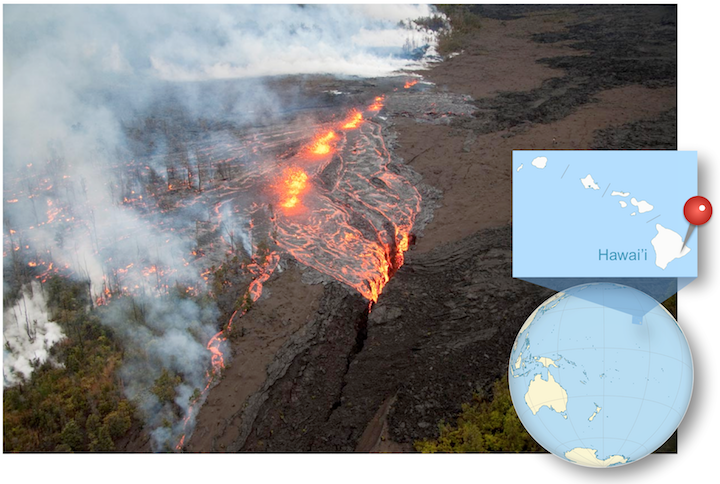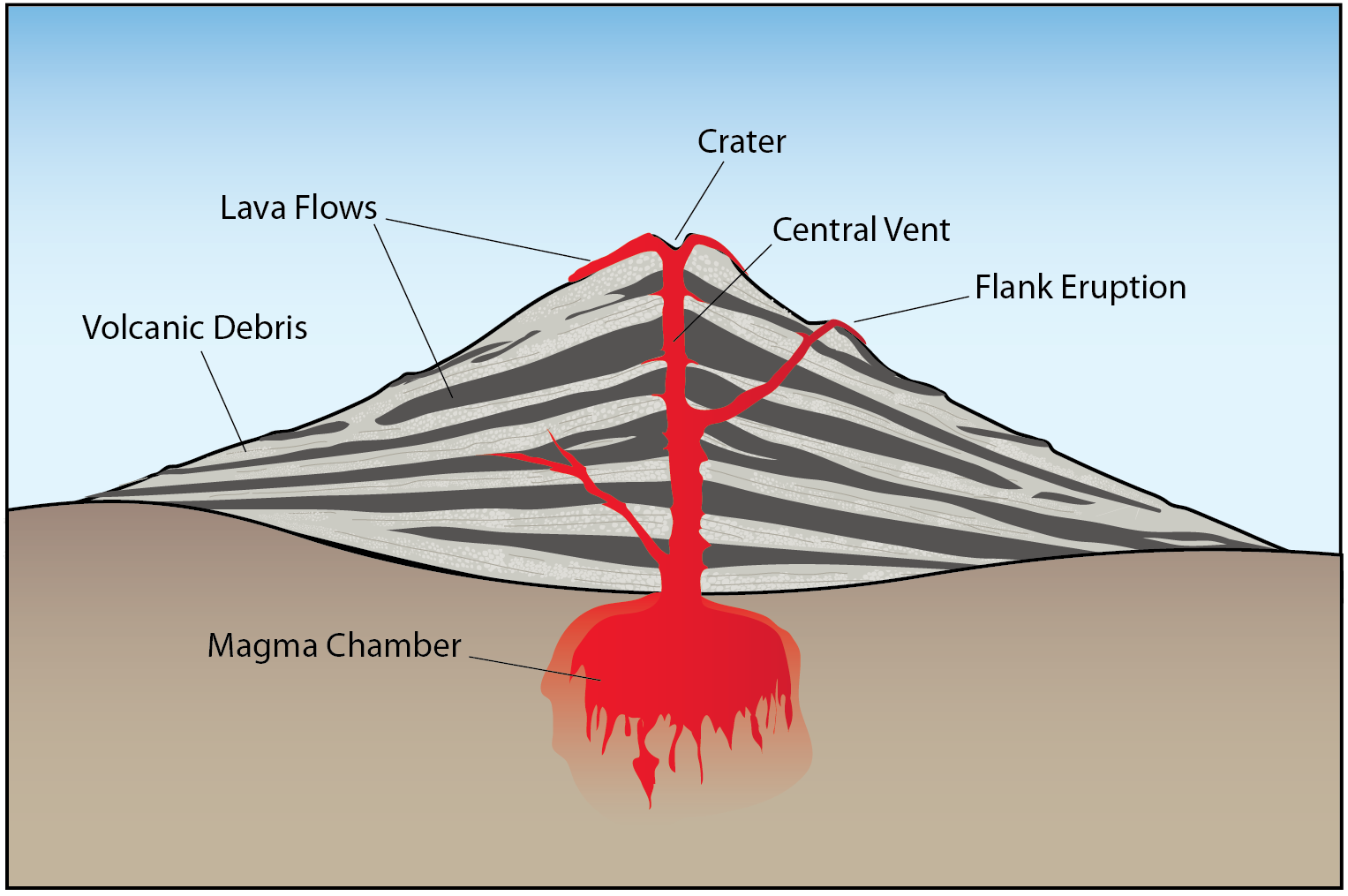5 4.1 What Is A Volcano?
Karla Panchuk
Volcanoes Are Where Magma Emerges
A volcano is a location where molten rock flows out, or erupts, onto Earth’s surface as lava. Volcanic eruptions can happen on land or underwater. Some volcanic eruptions flow from mountains (such as Mount Garibaldi in Figure 11.1), but others do not. Fissure eruptions (Figure 4.1) are volcanic eruptions flowing from long cracks in the Earth.

Volcano Anatomy
The main parts of a volcano are shown in Figure 4.2. When volcanoes erupt, magma moves upward from a magma chamber and into a vent or conduit. It flows out from a crater at the top, or sometimes emerges at a secondary site on the side of the volcano resulting in a flank eruption. Erupted materials accumulate around the vent forming a volcanic mountain. The accumulated material might consist of layers of solidified lava, called lava flows, but it might also include fragments of various sizes that have been thrown from the volcano.


